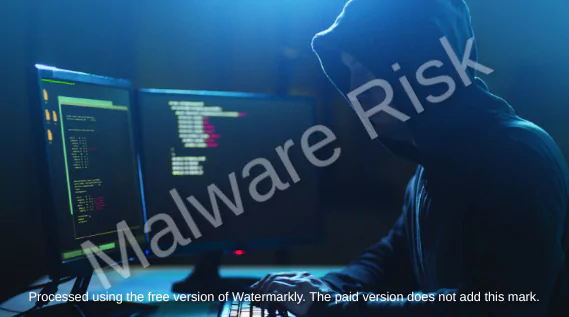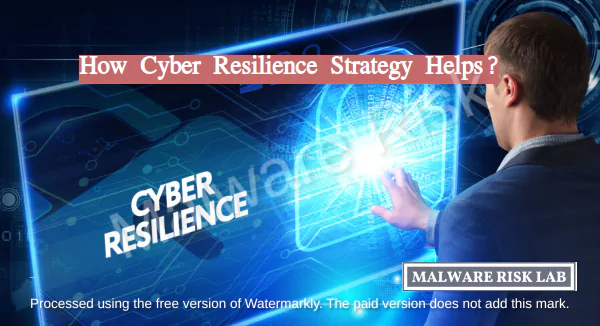In the digital world we inhabit, cyber threats are a constant shadow that hangs over our heads. Both personal and professional spheres are vulnerable to cyberattacks, from phishing to malware and more. Whether it is the security of your family, your home’s smart devices, or your small business’s sensitive information, understanding these threats is crucial.
Quick Links
Yet arming oneself with knowledge is only half the battle. Implementing resilient strategies and utilizing advanced security tools can further fortify our lines of defense. Not only does it protect us, but it also helps to establish a quick recovery path in the event of a breach. Furthermore, educating family and employees on these dangers and preparing them for responsible internet use can form a collective wall of safety.
Understanding Cyber threats
Cyber Threats and Cyber Attacks
A cyber threat or cyber attack involves attempts by hackers to damage, disrupt, or gain unauthorized access to computers, networks, or systems. Knowing the common causes and types of these threats is crucial in developing a cyber resilience strategy for protecting your family, home, and small business.

Malware, one of the most common types of cyber threats, refers to malicious software such as viruses, worms, trojans, ransomware, and spyware. Hackers create and spread malware to cause mayhem, steal sensitive information, or gain unauthorized access to systems.
Phishing is another common cyber threat where hackers pose as trustworthy entities via email or other forms of communication to trick individuals into revealing sensitive information like credit card details and login credentials.
Man-in-the-middle attacks (MitM) occur when a hacker intercepts communication between two parties to eavesdrop or impersonate one of the parties to gain sensitive information.
Potential Damaging Impacts of Cyber Threats
The rise in cyber attacks can have damaging effects on families, homes, and small businesses. For families and homes, a successful cyber attack can result in the loss of personal and sensitive information such as social security numbers, personal photos, bank account details, and more. The potential compromising point: weakly secured smart home devices or personal digital channels like emails and social media accounts.
For small businesses, cyber threats can cause significant financial loss either directly through theft of funds or indirectly via business interruption. Aside from financial loss, cyber attacks can lead to loss of customers’ trust and damage to the business’s reputation, resulting in potential long-term negative effects on profitability and business sustainability.
A targeted business can also face legal consequences if its lack of cybersecurity measures results in a breach of customer or employee data, violating state, federal, or international data privacy laws.
To protect your family, home, and small business from the damaging impacts of cyber threats, developing and implementing a good cyber resilience strategy is key. This encompasses defense measures against cyber threats, continuous monitoring of cyber risks, a robust recovery plan in case of breaches, and consistent upskilling and awareness programs to stay updated about evolving cyber threats.
Implementing Cyber-Resilience Strategies
What Is Cyber-Resilience Strategy
A cyber-resilience strategy helps protect your family, home, and small business from cyber threats. It is a multi-faceted approach that involves the identification, prevention, detection, and quick recovery from cyber attacks. The strategy not only equips you with the ability to withstand and recover from these threats but also minimizes the potential damage that can be caused.

Preventing Cyber Threats
The first step in a cyber-resilience strategy is the prevention of cyber threats. This can be achieved by deploying a robust cybersecurity system, including strong firewalls, antivirus software, and encrypted communications tools. Periodic updating of these systems also ensures they are sufficiently protected against the latest threats.
For small businesses, employee training is vital in preventing cyber threats. This includes instructing personnel on safe online practices and how to spot suspicious activity.
Minimizing Damage and Ensuring Quick Recovery
Despite preventive measures, cyber threats may still occur. Therefore, a key aspect of your cyber resilience strategy should focus on minimizing damage and ensuring quick recovery after a cyber attack. Backup systems and disaster recovery plans play an important role here.
You should regularly backup essential files and system settings. This enables you to restore your data if it is compromised during a cyber attack. A disaster recovery plan details the steps to be taken following an attack, which could include isolating infected systems, investigating the breach, and restoring data from backups.
Building a Resilient Network
Building a resilient network involves ongoing risk management. Risk management includes regularly assessing your network’s vulnerabilities, your resources’ strengths, and the potential impact of a cyber attack on your business. This knowledge helps you prioritize your cyber defenses and devote resources where they would be most effective.
In addition to risk management, your disaster recovery plan helps build a robust network. By detailing the procedures for responding to a cyber attack, you ensure that your network can recover swiftly and effectively, maintaining its resilience.
The Role of Cyber Hygiene in Defense
Good cyber hygiene practices are an essential part of a strong defense against cyber attacks. Activities such as regularly updating software, using strong, unique passwords, and being cautious with email attachments help protect your network from threats.
For households, teaching family members about cyber hygiene can foster a safer online environment. For businesses, this information should be included in employee training.
Tools and Technologies for Cyber-Resilience
Cyber-Resilience and its Importance
Cyber-resilience refers to the ability to prepare for, respond to, and recover from cyber-attacks or data breaches. It’s crucial not only for businesses but also for personal protection. With the increasing dependence on internet-connect devices, protecting your family’s digital devices and your home or small business network is essential. Effective cyber-resilience strategies can help mitigate the risks of cyber threats, such as data loss, financial fraud, identity theft, and more.

Security Software and Hardware for Enhancing Cyber-Resilience
There are several popular security software and hardware options you can use to enhance your cyber-resilience. For software, consider anti-malware programs like Avast, Bitdefender, or Norton. These applications protect individual devices from viruses, ransomware, and various other types of malware.
For small businesses, cybersecurity suites such as Symantec Endpoint Protection or McAfee Total Protection can offer more comprehensive protection. They usually include firewalls, intrusion detection systems, and anti-phishing tools. They can also safeguard multiple devices under one subscription, ensuring all your business computers and mobile devices are protected.
When it comes to hardware solutions, you might want to consider router-based security tools. High-quality routers often have built-in security features, employing firewalls and other security measures to monitor and control incoming and outgoing traffic.
Hardened network appliances such as UTM (Unified Threat Management) devices like Fortinet or Sophos are another great option. They provide multiple security features in one device, including firewall, anti-virus, intrusion prevention, and content filtering.
Protection for the Entire Network
Securing individual devices is essential but not enough. You also need to safeguard the entire home or business network to achieve real cyber-resilience. You can do this via network security measures, including using VPNs (Virtual Private Networks), setting up firewalls, and enforcing strong password policies.
VPNs encrypt internet connections, keeping your online activities private from spies, cybercriminals, and even your ISP. Meanwhile, firewalls monitor and control network traffic based on predetermined security rules, helping to block unauthorized access to your network.
The implementation of strong password policies, including the frequent change of passwords and the use of complex, unique passwords for different accounts and devices, is another key step towards securing your network.
Additionally, teach your family members or employees about being cautious with suspicious emails, links, or websites, which are common sources of malware and phishing attacks. Education is a vital component of a holistic cyber-resilience strategy.
Educating Family and Employees on Cyber Threats
Explaining Cyber-Resilience Importance
To communicate the importance of cyber-resilience, bring together your family or team and explain that virtually every facet of our day-to-day lives is connected to the internet. This includes social interaction, banking, shopping, and healthcare. This integration creates great convenience, but also opens the door to potential threats and scams.
Practicing cyber-resilience not only protects individual devices but also safeguards personal information like addresses, credit card numbers, and social security numbers. In the business context, cyber-resilience is crucial to protect sensitive client information, intellectual property, and company reputation.
Educating About Potential Cyber Threats
Educate your family members and team about the types of cyber threats they might encounter. These include phishing scams, which often appear as emails or messages from legitimate organizations asking for personal information, and malware, which is malicious software hidden in seemingly harmless files or websites that can steal data or damage your computer. Discuss the concepts of ransomware, where an attacker encrypts a victim’s files and demands a ransom to restore access, and social engineering, where bad actors manipulate people into breaking security procedures or divulging information.
Safe Internet and Email Use Strategies
After familiarizing your family and small business team with potential threats, it’s important to explain how to safely use the internet and email. Here are some topics to cover:
- Passwords: Encourage them to create strong passwords that are easy to remember but hard to guess, to use different passwords for different accounts, and to change them regularly. Consider introducing a password manager to help with this.
- Two-Factor Authentication: Teach them to enable two-factor authentication for their accounts for an extra layer of security. This generally includes their password (something they know) and a secondary verification like a code sent to their mobile device (something they possess).
- Phishing Scams: Warn them not to click on email links or download attachments from unknown sources, and to be suspicious of any emails or messages that ask for personal information.
- Secured Networks: Explain the importance of only using secured networks and to be wary of public Wi-Fi networks where possible, as these can provide opportunities for cyber threats.
- Regular Updates: Teach them the importance of regularly updating their devices and the software they use, as these updates often include crucial security improvements.
- Backups: Explain the importance of regularly backing up data, so they can restore their system in case of a ransomware attack or other disaster.
Conduct Regular Trainings
Hosting training workshops every few months to ensure that your family and team stay up-to-date with the latest threats and safety measures is recommended. These continuous training sessions reinforce their knowledge and habits when it comes to cybersecurity, contributing to a robust cyber-resilience. Incorporate real examples of recent scams, phishing emails, and threats into your training to make it more engaging and practical.
Wrapping Up
Deepening our comprehension of cyber threats and building resilience against them are not one-time undertakings. It is an ongoing process, with continuous risk management, regular disaster recovery planning, and constant reinforcement of cybersecurity rules at home and in the workplace. Embracing a proactive approach to cyber-resilience is arguably the best defensive strategy we can employ.
The integration of cybersecurity in our daily habits forms a bulwark that, when coupled with robust software and hardware, can offer comprehensive protection. Remember, when equipped with the right knowledge, tools, and behavior, each one of us can become a strong link in our family’s and business’s cyber defense chain.

Nishant Verma is a senior web developer who love to share his knowledge about Linux, SysAdmin, and more other web handlers. Currently, he loves to write as content contributor for ServoNode and also collaborated with MRLabs now.

